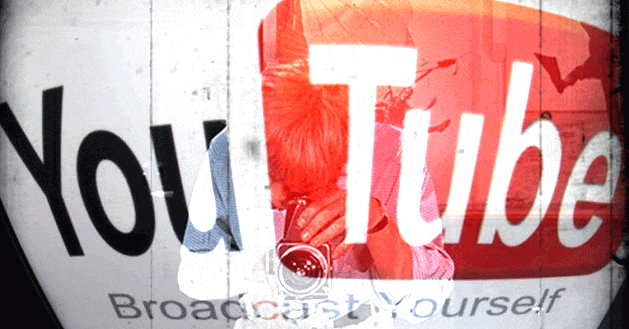 Written by ContentPowered.com
Written by ContentPowered.comYouTube is more than just a video host. In marketing, hosting a video on YouTube is just the beginning. You can embed that video, you can engage users anywhere it’s posted, and you can share it throughout the Internet. Even so, all of that neglects the foundation of the video; YouTube itself.
YouTube is a social media site, and YouTube is a large enough site that it shows up frequently in search results. What this means is you need – absolutely need – to optimize your videos when you post them. Otherwise you’re missing out on the community on YouTube itself, as well as the potential to rank in SERPs with the video alone.
How should you go about optimizing your videos?
Before Beginning
Develop a goal. Every good form of marketing begins with a goal. What is your purpose for being on YouTube? What do you want to get out of the users you engage on the site? Don’t just use YouTube as a video host; use it as a dedicated marketing channel.
Identify an audience. Nearly half of all Internet users spend some time on YouTube. There’s no way you could possibly produce a single compelling video that interests them all. It’s essential that you target a specific audience. Luckily, you have plenty of information to go on, from your other marketing channels.
Plan a content strategy. With your audience and your goal in mind, you can develop a strategy. What kind of content are you going to produce? What sort of topics will you cover? If you’re searching for ideas, you can begin by looking over your blog for your best posts. See if you can cover them in more detail with a video.
Build a Foundation
Brand your channel page. Your channel page is just as important as the homepage of your Facebook profile or the front page of your blog. It’s where users are taken when they want to see what your most recent videos are, what videos you like and what videos you want to feature. Take the time to brand this page. Upload a background and logo to customize the page – a default page is boring – and make sure the name you’ve chosen for the account is branded and compelling.
Create, or prepare to create, featured playlists. If you have no videos yet produced, you can’t create playlists. However, you can plan ongoing series to add to playlists later. For example, establishing a weekly customer Q&A would give you an overarching theme for an ongoing series of videos. Put them all in one place so users can watch from one to the next seamlessly.
Follow or like related industry thought leaders. Your channel page displays a selection of other channels you like and want to feature. Pick a selection of active, interesting industry channels. This shows users that you’re aware that you’re not operating in a void and that you consider the opinions of these other channels to be valuable.
Produce Quality Videos
High quality video content is utterly essential. If you’re shooting video in 320 you’re going to be shown up by everyone producing full HD. If your video is dropping frames or looks shot on a webcam, no one is going to care what you have to say. Invest in a decent camera, or at least a suite for creating videos using kinetic typography or cartoon graphics.
High quality audio content is just as essential. A decent microphone is the difference between success and failure. Learn how to process audio separately from video for later encoding. Avoid unnecessary sound effects or filters.
Write a quality script. Unless you’re an expert ad-libber, you’re going to need a script. More importantly, you’re going to need to practice it. Don’t be afraid to re-record if you stutter or stumble; that’s what editing in post production is there to correct.
If you’re including music, make absolutely sure you have the rights to include that music. The same goes for images used in the videos. YouTube takes copyright violations very seriously, and a single violation can destroy your YouTube earning potential for months.
Keep length under ten minutes. There’s no guaranteed best length for videos, but anything over ten minutes is going to run on longer than most users care to watch. The average for successful videos is usually around five minutes.
Add a video endcap. Once the content of the video is over, include a short 5-10 second call to action. This endcap works by using annotation links to the pages you want users to click. A link to your subscription page, to another video or to your website is par for the course.
Upload and Optimize
This is where the SEO influence comes in. Everything before this is building a solid goal, plan and marketing foundation.
Optimize the video title. This is the most important place to put your primary keyword. Don’t stretch on too long. Think of it like the title for a blog post, but even more important. Many YouTube users can and will judge a video based entirely on its title and thumbnail.
Include relevant tags. Tags for the video help it show up in YouTube’s search. They’re also influential in Google searches, though Google also considers the description as well. Make sure you’re only using the YouTube video tag system; never spam tags in the description field.
Include a lengthy video description with links. The first few sentences – the stuff that shows up before the “Show more” expander – should be packed with keyword value. You can be more leisurely with a longer description under the cut, including links to your website and social profiles.
Upload a video transcript. YouTube has its own transcription system, but it’s deeply flawed, particularly if you’re using industry jargon or technical terms YouTube doesn’t understand. To make sure your captions are accurate, upload a video transcript.
Embed the video on your blog. Obviously, your blog is the best place to link to a video you produced. You can surround it with a short blog post further expanding upon the video description, and including calls to action to get users from your website to YouTube for engagement metrics.
Link to the video on social media sites. Posting your video on Facebook, Google+, Twitter and Pinterest will give it as much exposure as you can give it without investing in niche forums or minor social networks. Make sure to make use of all of the typical social media optimization techniques when posting your video link.
Finally, encourage comments, likes and subscriptions. With your endcap, your description, your blog posts and your advertising, encourage YouTube metrics. Views, likes and comments all help boost your video in the on-site rankings.


